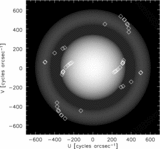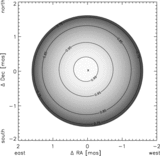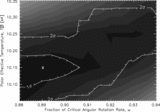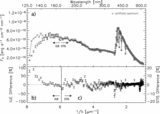Image Details
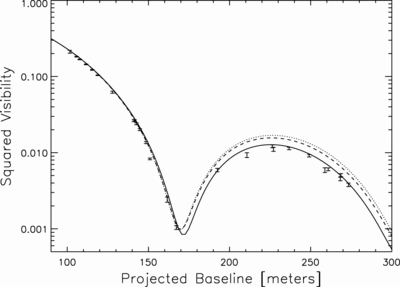
Caption: Fig. 2.
Best‐fit one‐dimensional, symmetric models in comparison with the CHARA/FLUOR data set. The dotted line is a bandwidth‐smeared uniform disk (﹩\chi ^{2}_{\nu }=38﹩, ﹩\theta _{\mathrm{UD}\,}=3.209\pm 0.003﹩ mas) The dashed line is a bandwidth‐smeared PHOENIX model atmosphere with parameters consistent with a slowly rotating Vega [﹩T_{\mathrm{eff}\,}\ =9550﹩ K, ﹩\mathrm{log}\,( g) =3.95﹩, ﹩\chi ^{2}_{\nu }=20﹩, ﹩\theta _{\mathrm{LD}\,}=3.259\pm 0.002﹩ mas], and the solid line a bandwidth‐smeared analytic limb‐darkening model, ﹩I\left(\mu \right)=\mu ^{\alpha }﹩ (﹩\chi ^{2}_{\nu }=1.5﹩, ﹩\theta _{\mathrm{LD}\,}=3.345\pm 0.006﹩ mas, ﹩\alpha =0.341\pm 0.013﹩). If extended emission in the ﹩K^{\prime }﹩ band is present at the 1.3% level in the Vega system, these best angular diameters are systematically high by ~3 ﹩\sigma ﹩ (see text).
Copyright and Terms & Conditions
© 2006. The American Astronomical Society. All rights reserved. Printed in U.S.A.


